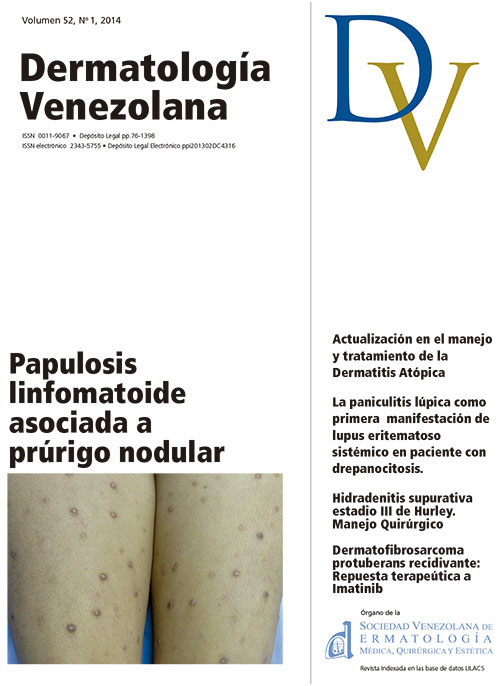Necrosis cutánea por warfarina en paciente con síndrome antifosfolípido
Palabras clave:
necrosis cutánea tardía, warfarina, anticoagulantes, efectos adversos, síndrome antifosfolípido, late skin necrosis, warfarin, anticoagulants, adverse effects, antiphospholipid syndromeResumen
La necrosis cutánea por warfarina es una complicación grave por el uso de este anticoagulante que, usualmente, se presenta entre el tercer y quinto día de iniciado el tratamiento. La necrosis se produce en áreas con gran cantidad de tejido adiposo, como las mamas, glúteos, abdomen y caderas. Recientemente, se han registrado casos de aparición tardía asociada con infecciones, vacunas, medicamentos y/o falla en su administración. Una rápida evolución de placas eritematosas a necróticas incrementa la morbilidad de estos pacientes, con algunos casos, reportados como fatales en la literatura. Se presenta un caso de necrosis cutánea de aparición tardía en paciente con síndrome antifosfolípido en tratamiento irregular con warfarina.
AbstractSkin necrosis by warfarin is a severe complication of treatment with this anticoagulant, usually occurring between the third and fifth days of starting treatment. Necrosis occurs in areas rich in subcutaneous f at, such as breasts, buttocks, abdomen and hips. Recently, there have been cases of late onset skin necrosis associated with infections, vaccines, drugs and/or failure of its administration. A rapid development from erythematous to necrotic lesions, increases morbidity of these patients, with some fatal cases reported in the literature. We present a case of late-onset skin necrosis in a patient with antiphospholipid syndrome being irregular treated with warfarin.

